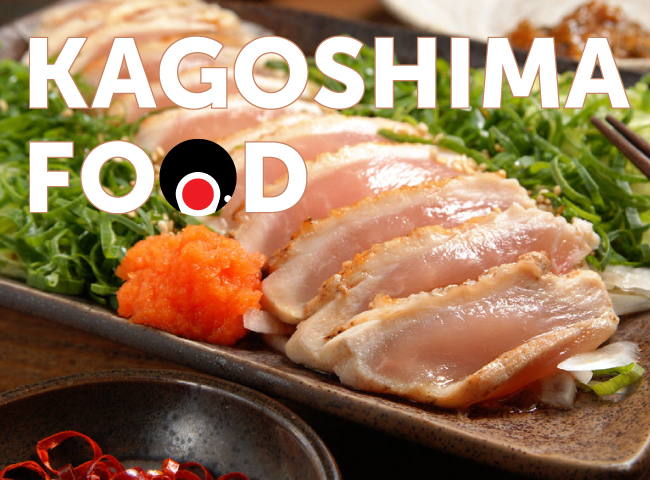Spring Festivals in Japan: A Food Guide
Japan is a country with four distinct seasons that it loves to celebrate with various seasonal holidays. Springtime is a time of mild weather and blossoming sakura trees, a season for cleaning up the family altar and praying for children to grow up strong and healthy. Read on to learn all about the festivals that take place during spring in Japan, and the foods that go with them.
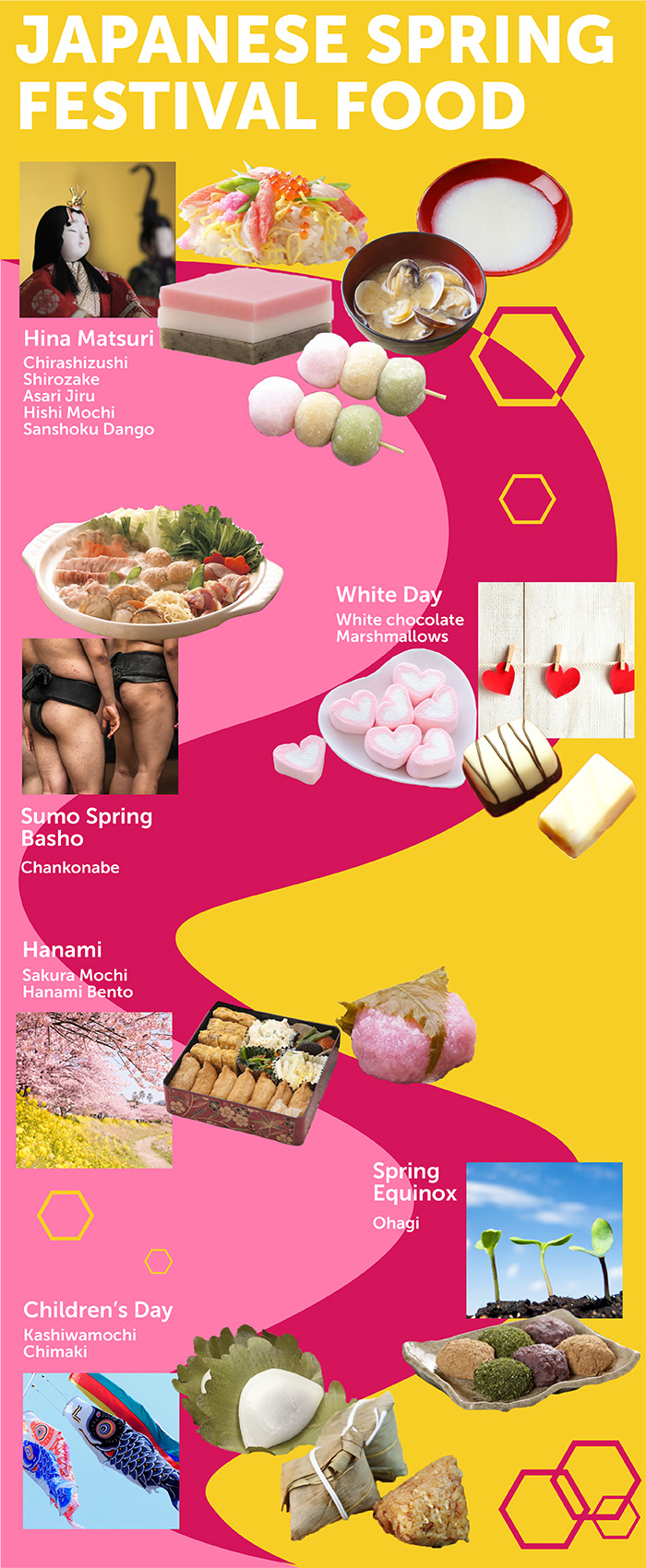
Celebrate Spring in Japan with Traditional Festivals & Food
Hinamatsuri (Girl’s Day/ Doll’s Festival), 3rd March)

Hinamatsuri is a Japanese festival also known as “Girl’s Day” or “Doll’s Day”. For Hinamatsuri, parents set out a display of ornamental hina dolls and serve foods that have special symbolism while praying for the future happiness of their daughters.
Hisimochi

Hishimochi is one of the most iconic foods of Hinamatsuri. It’s a confectionary molded in the shape of a diamond that’s colored green, pink, and white. The white represents the winter snow melting away, green represents new growth, while pink represents ume plum blossoms that flower in early spring.
Sanshoku Dango

Sanshoku (“tri-color”) dango are another traditional sweet, consisting three springy balls of dough made from rice flour and served on a skewer. The three colors are also in the Girl’s Day green, white, and pink motif.
Shirozake

Shirozake is a type of sweet and mild rice wine and the customary drink of Hinamatsuri. Traditionally, it was consumed to cleanse the body. Children may be served amazake instead, a sweet fermented drink that has a negligible alcoholic content.
Chirashizushi

Chirashizushi means “scattered sushi” is a dish of rice with miscellaneous ingredients scattered decoratively across the top. As fish are considered a symbol of good luck in Japan, fresh fish is eaten during Hinamatsuri on chirashizushi, with sashimi and vegetables scattered lightly over sushi rice.
Clam Soup
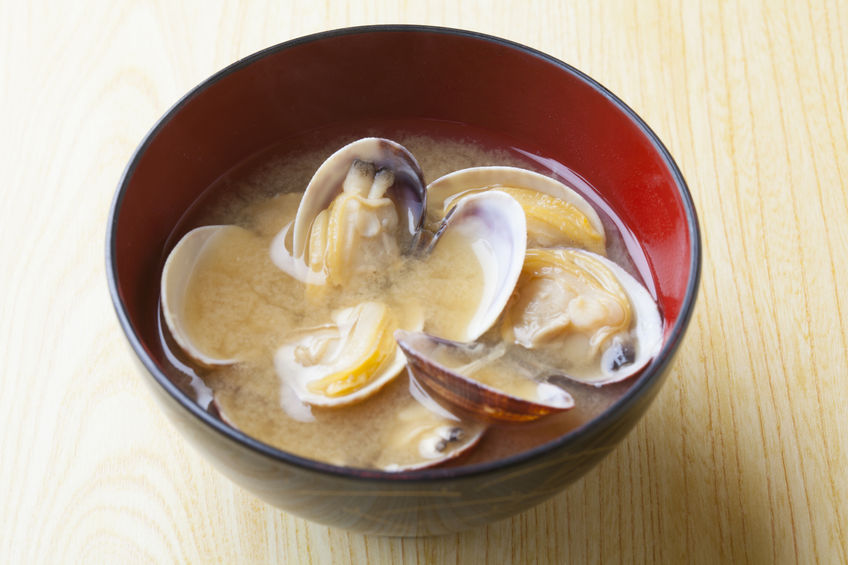
Clam soup is another popular Hinamatsuri dish. It may be served in a clam shell as the two shells of the clam represent unity and are a symbol of parents’ hope for their daughter’s future happiness in marriage.
White Day, 14th March
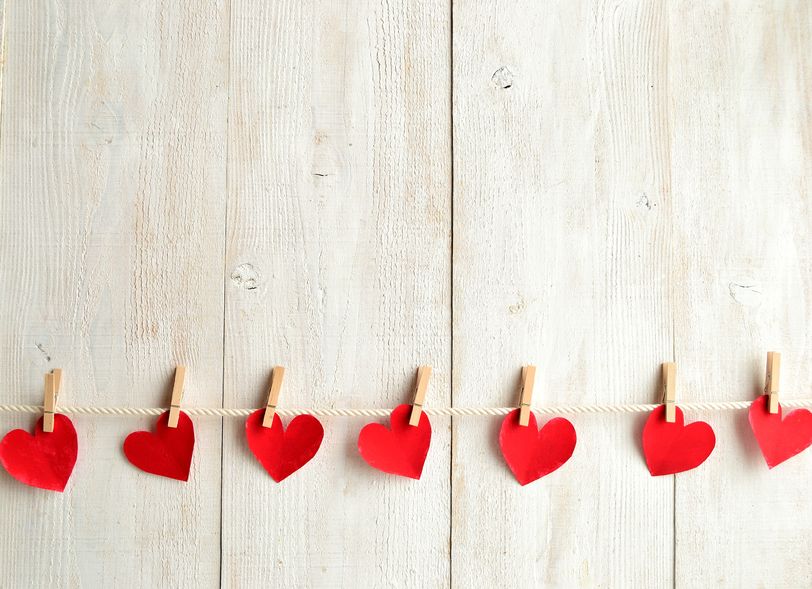
White Day is not a traditional holiday, but it’s a modern event that has become popular in Japan and other Asian countries, which takes place one month after Valentine’s Day on March 14. Women in Japan give chocolate to men on Valentine’s Day, so White Day is the day when men are expected to reciprocate with presents and sweets. The day originated as “Marshmallow Day” in the 1960s, but has since expanded to include white chocolate and other white-colored sweets.
White-colored Chocolate, Marshmallows & Sweets
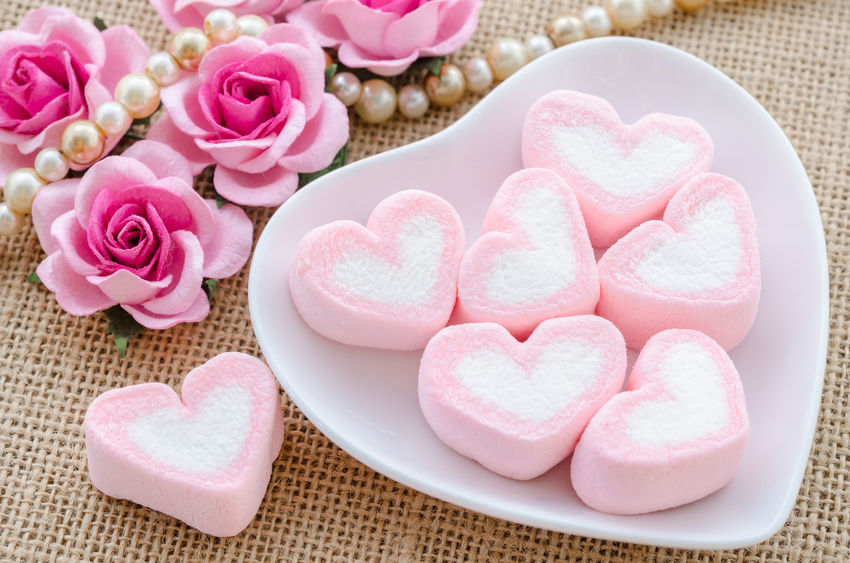
Hanami (Cherry-Blossom Viewing), March - May

Hanami is a special type of spring festival in Japan that involves picnics around cherry blossom trees to celebrate their flowers coming to bloom. The custom originated in ancient Japan during the Nara Period, although people at that time picnicked under ume plum blossoms. As the sakura (cherry blossom) tree overtook the ume in popularity, it became the “official” flower for hanami and inspired much of the food eaten at picnics.
Sakura Mochi

Sakura mochi is a confectionary eaten during the spring at Hinamatsuri and hanami picnics. It consists of a piece of mochi rice dough wrapped around a ball of sweetened bean paste and wrapped in a salted sakura leaf. A similar treat from the western Kansai region of Japan is domyouji, made with glutinous rice that has been mashed into a lumpy paste.
Hanami Bento
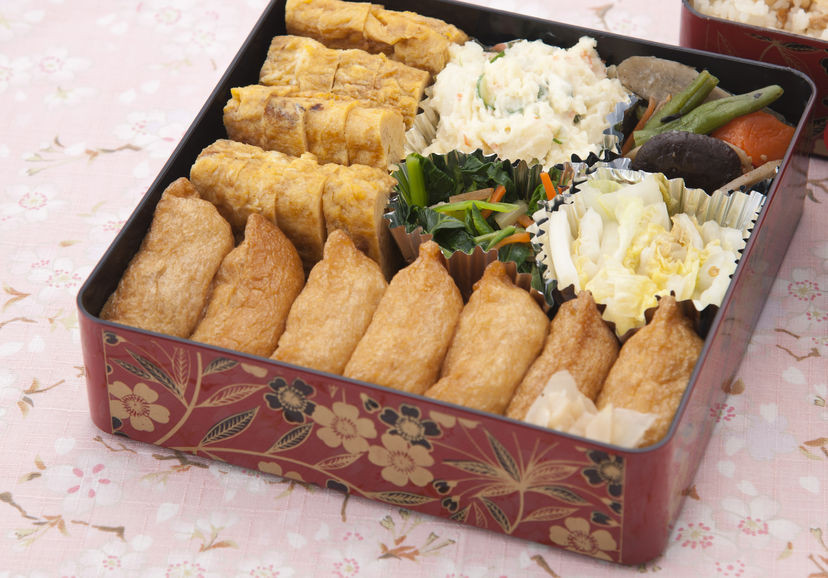
Bento lunch boxes are also popular during hanami and feature items that can be easily split amongst a group of people such as kara-age (fried chicken), makizushi (sushi rolls), inarizushi (fried tofu pockets filled with sushi rice), kamaboko (fish cake), and tamagoyaki (sweet Japanese omelet).
Shunbun no Hi (Spring Equinox), 20th or 21st March

The vernal, or spring, equinox in Japan is a time when people honor their ancestors by cleaning the family grave plot, spending time with other family members, and enjoy the warm spring weather outdoors.
Botamochi
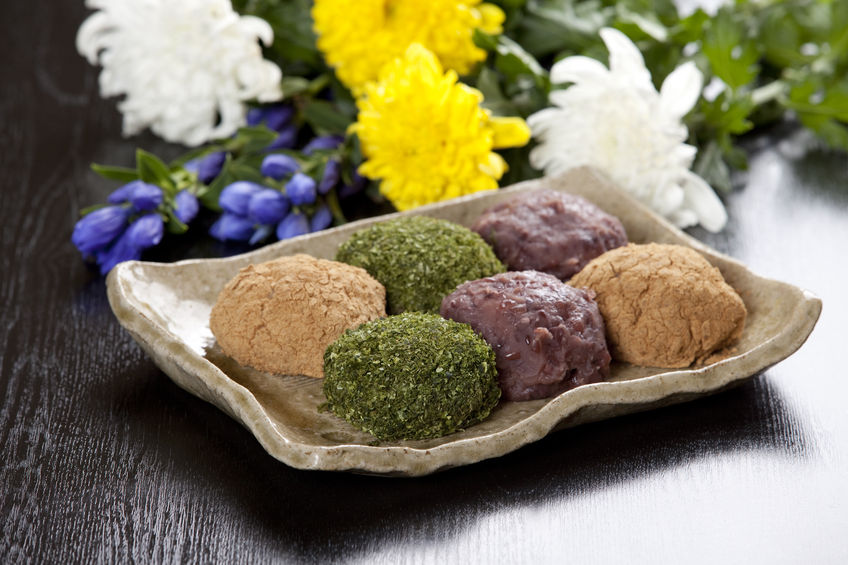
Botamochi is a type of confectionary eaten on this day. It’s a sweet rice ball covered with red bean paste, which may be coated in kinako powder (toasted soy flour) or crushed sesame seeds. The dessert gets its name from the “botan” peony flower, which blooms during spring in Japan
Kodomo no Hi (Children’s Day/ Boy’s Day), 5th May

Children’s Day, originally known as “Boy’s Day”, is a festival that takes place on May 5 where parents pray for the health and safety of their children. Families with boys set out a replica samurai helmet on display and may fly a special flag or kite in the shape of a carp outside their homes.
Chimaki

One of the traditional foods eaten on this day in the western Kansai area of Japan is chimaki, a dessert that features various sweets such as kudzumochi (rice cake made from arrowroot) and yokan (bean paste jelly) wrapped in a bamboo leaf together and steamed.

Another traditional food eaten on Children’s Day is kashiwamochi, which originated during the Edo period in the eastern Kanto region of Japan. Kashiwamochi features a round, flat rice cake filled with sweetened bean paste that is steamed and wrapped in an oak leaf, a symbol of good luck.
Sumo Spring Basho
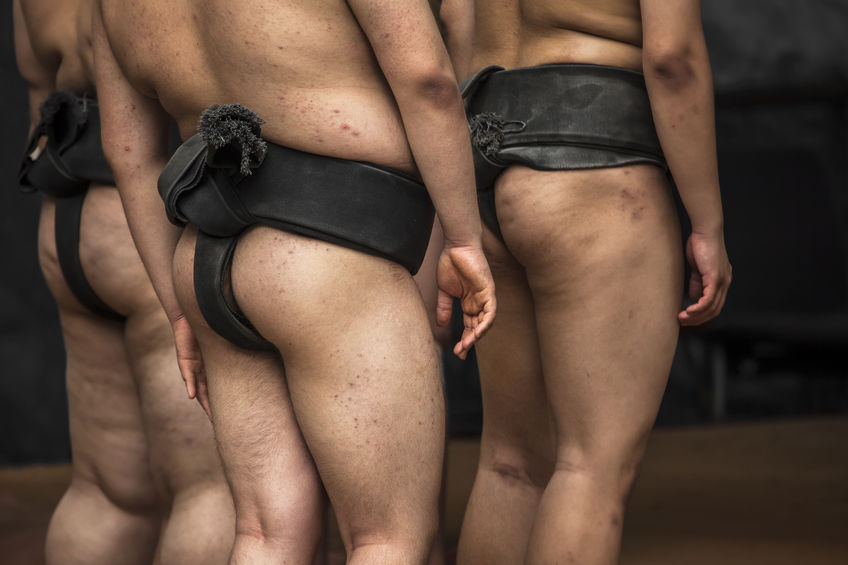
The Sumo Spring Basho in Osaka is a festival in Japan not to miss! It is one of three official sumo tournaments held each year, with the others in Tokyo in January and Nagoya in June. The top-class matches don’t begin until later in the day, so lunchtime offers the perfect opportunity to try the quintessential sumo dish, chanko nabe.
Chanko Nabe

A hot pot dish filled with lots of protein, including meat, seafood, and tofu, along with plenty of vegetables served in a soy sauce, miso, salt, or kimchi-flavored broth, chanko nabe is eaten by sumo wrestlers along with copious amounts of rice and beer to help them bulk up while training. Each training stable is said to have its own recipe and retired sumo wrestlers will often open chanko nabe restaurants featuring their own recipe.
Enjoy the Fun and Flavors of Spring Festivals in Japan
There’s a wide variety of special holidays and holiday foods to enjoy during spring in Japan. Check out the best places to try them and more on Gurunavi’s restaurant listings page. Itadakimasu!








